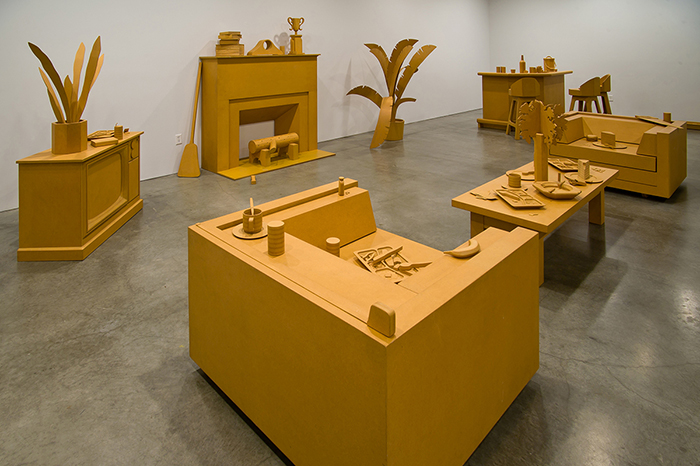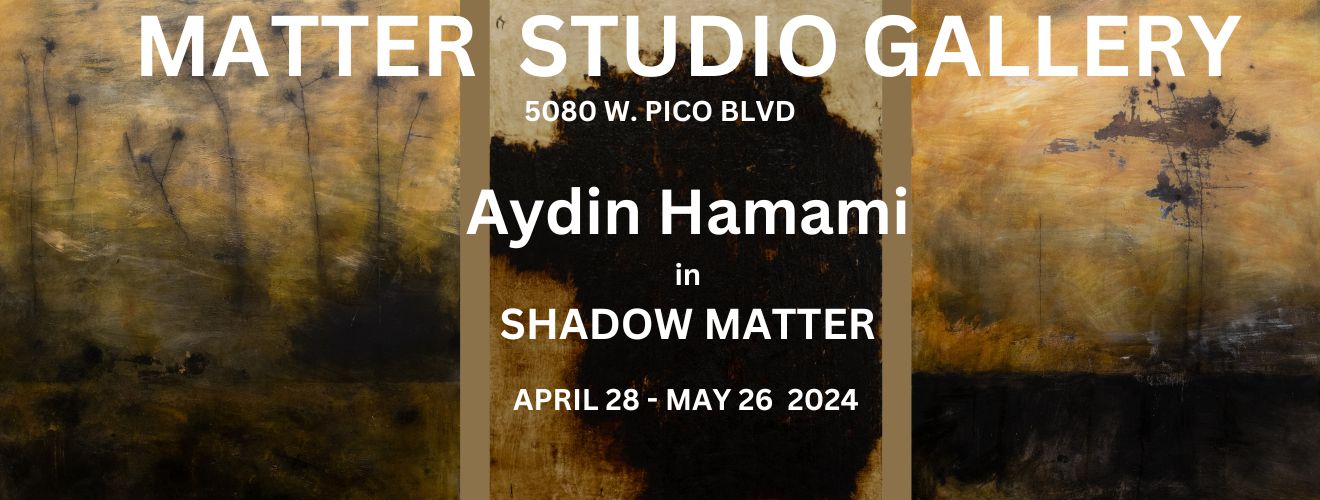
Diane Rosenstein Gallery is honored to present Roland Reiss: The Castle of Perseverance, curated by Jorin Bossen. This focused exhibition will show Reiss’ epic room-sized installation (created in 1978), as well as a related selection of miniatures.
Roland Reiss (USA, 1929 – 2020), who passed away in December at the age of 91, gained substantial recognition, beginning in the mid-1970s, for his miniatures. These sculptural tableaux were included in the 1975 Whitney Biennial and then a solo exhibition — The Dancing Lesson: 12 Sculptures — at the Los Angeles County Museum of Art (LACMA) in 1977. Numerous institutional exhibitions and surveys followed, over the next forty years.
The Castle of Perseverance (1978) is a life-sized sculptural installation, first exhibited in 1978 at the Newport Harbor Art Museum (now the Orange County Museum of Art) and will be presented here for the first time in a decade. The Castle is Reiss’ interpretation of a typical American middle-class living room of the 1970s, recreated entirely in particleboard. The uniform, monochromatic yellow-brown surfaces create a real/unreal environment, which Reiss also employs in his miniatures. This installation presents an opportunity for visitors to enter and inhabit the diorama-like conceptual and narrative sculptures for which Reiss was so widely recognized – and to envision themselves as the human figurines inside.
Reiss wrote: “It was a chance for me and others to experience the difference between my tableaus and life scale. The miniature is automatically experienced as fictional because the scale is reduced. In life scale, things immediately become real.” — A Seventeen Year Survey (Catalogue), 1991
In the 1970s, Reiss was influenced by the emergence of the television docu-drama, and The Castle of Perseverance can be considered a dramatic reenactment all its own. Like the set of a film production, the installation is filled with props, from houseplants and furniture to ashtrays and TV dinners. The genre of the narrative in which we are suspended, however, is uncertain; a particleboard gun sits on the coffee table, implying a twist in the second act.
The exhibition, and the artwork at its center, takes its title from a 15th century morality play, which charts the birth, life, death, and complicated moral dilemmas throughout, of a character called Humanus Genus; in today’s English: Mankind. The play is one of the earliest known examples of what we now call theater in the round, a fitting concept for an artist whose work frequently employs the visual language of cinema and theater.
In his 2011 essay for Roland Reiss: Personal Politics and Sculpture from the 1970s and 1980s, (PMCA), Christopher Miles observed:
“The Castle finds itself at home among Reiss’ prolific production of tableaux small and large and it also establishes territory in the field of what has come to be called installation art connecting to an odd network of kin as varied as Claes Oldenburg’s 1963 Bedroom Ensemble, the 1972 Womanhouse Project whose 28 artist/participants variously recast the narrative spaces of a Hollywood mansion; the domestic-interior tableaux of Edward Kienholz and Nancy Reddin Kienholz; and the semiotically charged quasi domestic-space installations of Barbara Bloom. But The Castle also relates to and deserves further consideration in light of the development of Reiss’ artistic practice beyond the tableaux in its engagement with material playing with realism, referentiality, and abstraction — and in its approaches to sculptural representation (initially hidden in plain sight) — faithful replicas, cut-out silhouettes, forms pared down to something like 3-dimensional international symbols — the Castle foreshadows Reiss’ later work…
The Castle of Perseverance provides a setting for us to look into and work within while engaging in the investigation of narrative possibility. From this space, we can also look outward at the long span of Roland Reiss’ practice and see it all come together and connect with the array of semiotic play that has defined much of the art produced in Reiss’ years as an artist.”
The Castle is the progenitor of Reiss’ Morality Plays (1980-2018), a selection of which are also on view. In this series, wall-mounted models encased in plexiglass depict rearranged versions of the same living room, filled with the same objects and treated in similar uniform finishes. These scenes are layered with elements signifying specific vices and virtues, considering how the objects in our lives express our personal values.
In his remembrance of Roland Reiss, Christopher Knight wrote: “Populated with little people and animals in carefully observed public and private settings, his tableaux suggest rather than describe narratives. They establish witty, open-ended, psychosocial dramas based on sources as distinct from one another as murder mysteries, ballroom dancing lessons and corporate office politics. A viewer enters the staged morality tale imaginatively, then forms a conceptual scenario born of his own unique experience.” (LA Times, December 31, 2020)
The most recent work completed last year, is a suite of Adult Fairy Tales — figurative tableaux that shift the focus from the American home to the corporate workplace. The 1980s Adult Fairy Tales originally contemplated the absurdity of workplace dynamics and literalized the emotional compartmentalization essential to being a ‘good worker.’ The Adult Fairy Tales (2020) can’t help but have us reflect anew on the plexiglass dividers and glitchy digital screens that divide us from each other and ourselves. The scaled-down corporate workers, arranged at odd angles such that they appear to be speaking and looking past and around one another, and interspersed with inscribed columns (a motif also present in the Morality Plays), hold additional significance in the era of social distancing.
Roland Reiss: The Castle of Perseverance is a posthumous installation, and Reiss’ fifth solo exhibition with the gallery. This presentation is curated by the artist Jorin Bossen, Reiss’ longtime friend and studio manager. While not a memorial exhibition, it is offered in tribute and holds space for the late artist, who presciently created space for us.
About the curator: Jorin Bossen lives and works in Los Angeles, California. He was born in Lansing, Michigan. He has exhibited and is in collections throughout the US and Europe. His work appears in and on the cover of New American Paintings, No. 53. He is a member of the artist/curator collective Durden and Ray. He studied art and art history at Kalamazoo Collage and received his MFA from Claremont Graduate University.
About the artist: Roland Reiss (1929 – 2020) is widely known for his miniatures but is foremost a painter. An influential and beloved voice in the Los Angeles and Southern California art scene, Reiss exhibited widely throughout his sixty-year career. He received fourteen solo museum exhibitions, including The Dancing Lessons: 12 Sculptures (1977) at the Los Angeles County Museum of Art. A retrospective at the Begovich Gallery at Cal State Fullerton (2014) highlighted his career of continual self-reinvention, which led to a groundbreaking body of work. His miniatures, sculptures, and paintings are included in the permanent collections of LACMA, Museum of Contemporary Art, Los Angeles (MOCA), The Hammer Museum, The Whitney Museum of American Art, New York; Orange County Museum of Art (OCMA), Palm Springs Art Museum, Laguna Art Museum, Riverside Art Museum, among others. Roland Reiss was the Chairman of the Art Department at Claremont Graduate University from 1971- 2000; he also received four National Endowment for the Arts Visual Artist Fellowships for both painting and sculpture. Roland Reiss lived and worked in Los Angeles.






